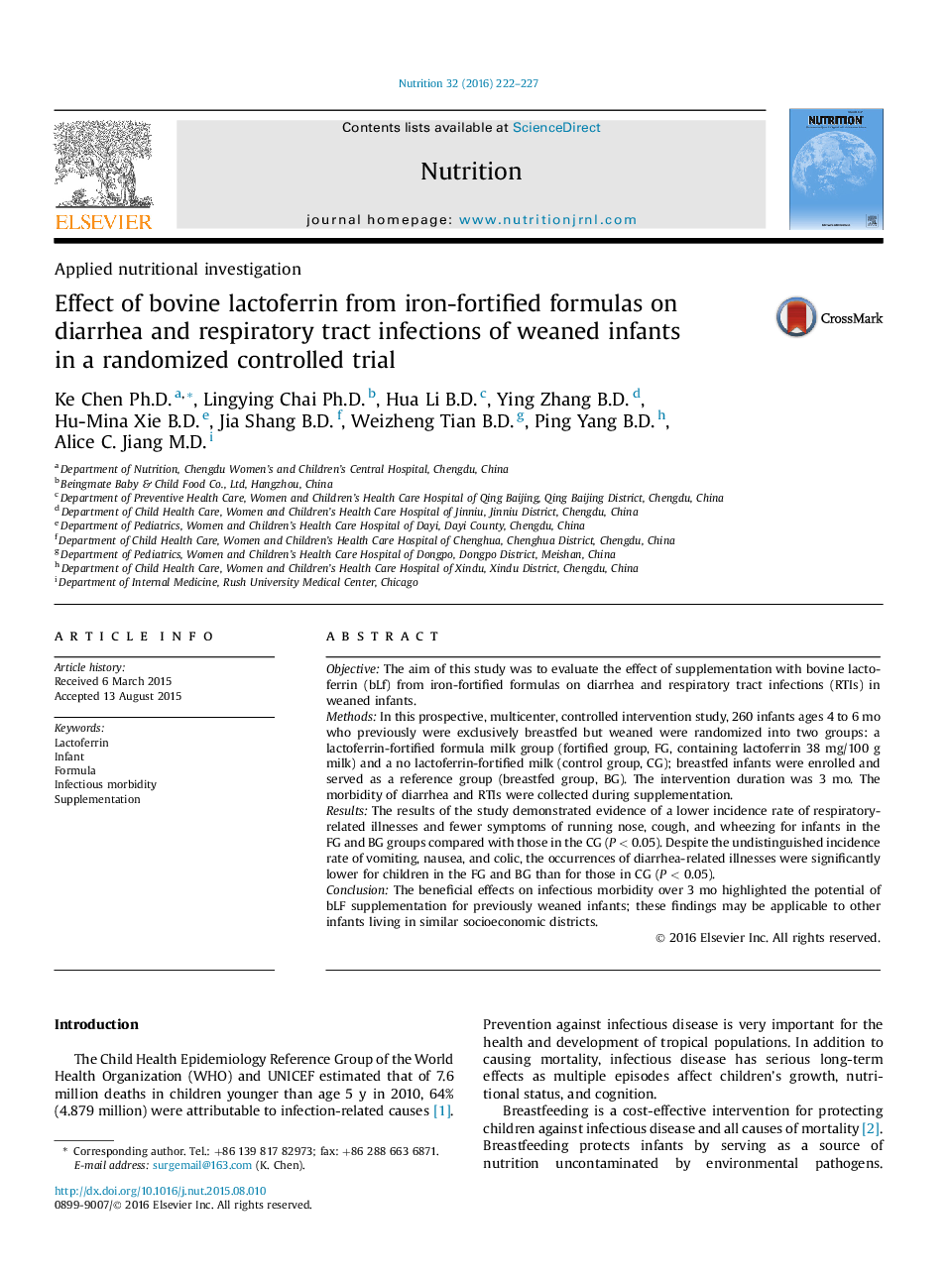| Article ID | Journal | Published Year | Pages | File Type |
|---|---|---|---|---|
| 6089407 | Nutrition | 2016 | 6 Pages |
â¢Significant beneficial effects on infection morbidity were detected after 3 mo of intervention with bovine lactoferrin (bLF)-fortified formula.â¢There is potential for bLF supplementation to be used in previously weaned infants in a suburb of Chengdu, China.â¢These findings may be applicable to other infants living in similar socioeconomic districts.
ObjectiveThe aim of this study was to evaluate the effect of supplementation with bovine lactoferrin (bLf) from iron-fortified formulas on diarrhea and respiratory tract infections (RTIs) in weaned infants.MethodsIn this prospective, multicenter, controlled intervention study, 260 infants ages 4 to 6Â mo who previously were exclusively breastfed but weaned were randomized into two groups: a lactoferrin-fortified formula milk group (fortified group, FG, containing lactoferrin 38Â mg/100Â g milk) and a no lactoferrin-fortified milk (control group, CG); breastfed infants were enrolled and served as a reference group (breastfed group, BG). The intervention duration was 3Â mo. The morbidity of diarrhea and RTIs were collected during supplementation.ResultsThe results of the study demonstrated evidence of a lower incidence rate of respiratory-related illnesses and fewer symptoms of running nose, cough, and wheezing for infants in the FG and BG groups compared with those in the CG (PÂ <Â 0.05). Despite the undistinguished incidence rate of vomiting, nausea, and colic, the occurrences of diarrhea-related illnesses were significantly lower for children in the FG and BG than for those in CG (PÂ <Â 0.05).ConclusionThe beneficial effects on infectious morbidity over 3Â mo highlighted the potential of bLF supplementation for previously weaned infants; these findings may be applicable to other infants living in similar socioeconomic districts.
